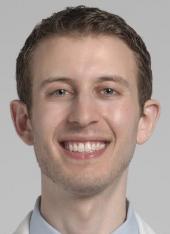By Suzanne Leigh

“We need cost-effective, tailored interventions so that adolescents’ first court appearances become an opportunity to prevent worsening of pre-existing health risks and further entrenchment in the justice system,” said senior author Marina Tolou-Shams, PhD.
Adolescents who identified as non-heterosexual are significantly over-represented among first-time offenders, according to a new study that examined sexual orientation, gender expression, and mental health among young people who are involved in the justice system, but are not incarcerated.
The study also found that depression, self-harm, and drug and alcohol use were more prevalent among youth who identified as lesbian, gay, bisexual, trans, queer, (LGBTQ) or other sexual minorities, as compared with straight youth.
“It would be incorrect to conclude that sexual-minority status puts a youth at increased risk of offending,” said first author Matthew Hirschtritt, MD, MPH, of the UCSF Department of Psychiatry and the UCSF Weill Institute for Neurosciences. “But if we compare court-involved sexual minority youth with court-involved straight youth, we see more severe psychological distress and a greater likelihood of child-welfare system involvement.”
More than 70 percent of justice-involved adolescents are in the community and monitored by the courts, rather than in detention, for offenses ranging from underage drinking to breaking and entering. These young people may also be referred to community programs that provide mental health counseling, substance-use treatment and/or education programs.
1 in 3 youth who break the law identify as sexual minorities
Researchers of the UCSF-led study recruited 423 first-time, non-detained offenders, ages 12 to 18, from a juvenile court in a Northeastern state. Of these, 133 adolescents, or 31.4 percent, said they were attracted to or sexually active with their own or both genders, questioned their sexual orientation, or were discriminated against because of their sexual orientation or gender expression. This percentage is similar to that found in a different study among youth in juvenile detention centers.
Among these 133 sexual-minority adolescents, two reported a different gender identification than that assigned at birth, the authors noted. The study was published in the Journal of Adolescent Health on August 1, 2018.
In contrast, 11.2 percent of U.S. 9th-to-12th graders in a 2015 government-led survey identified as non-heterosexual – just over one-third of the incidence reported in the UCSF-led study.
Hirschtritt and his team found that among the sexual-minority group, whose ages averaged 14, 46.6 percent had used alcohol, versus 26.6 percent of the heterosexual group. They were also approximately twice as likely to use drugs, including synthetic cannabis, cocaine and injection drugs as the heterosexual group — 20.2 percent and 10.3 percent, respectively.
Witnessing violence, self-harm, substance abuse also common
The sexual-minority group was more likely to have witnessed violence against a parent or guardian — 26.3 percent compared with 11.9 percent for the heterosexual group — and was at higher risk for self-harm, 46.5 percent versus 12.6 percent, respectively.
Additionally, the sexual-minority group reported poorer mental health, as demonstrated by increased difficulties dealing with daily life, inattention and hyperactivity, and internalizing behavior, such as fearfulness and social withdrawal.
There were no significant differences between the two groups’ age, race and ethnicity, family income, school-related characteristics or charge types, indicating that sexual-minority status may represent “unique behavioral health risks,” Hirschtritt said.
“These results suggest that sexual minority status must be specifically queried and in multiple ways, so that their needs are met,” said senior author Marina Tolou-Shams, PhD, of the UCSF Department of Psychiatry, UCSF Weill Institute for Neurosciences, and Zuckerberg San Francisco General Hospital and Trauma Center.
“We need cost-effective, tailored interventions so that adolescents’ first court appearances become an opportunity to prevent worsening of pre-existing health risks and further entrenchment in the justice system,” she added.
“Factors like peer rejection and family discord may contribute to impaired support networks and engagement in risky behavior,” said Hirschtritt. “Intake and community supervision staff should query for high-risk behaviors. Additionally, one-on-one support, group counselling and peer support may meet the needs of these adolescents without further stigmatizing them.”
Co-authors are Emily F. Dauria, PhD, of UCSF and Zuckerberg San Francisco General Hospital and Trauma Center; and Brandon D.L. Marshall, PhD, of Brown University School of Public Health. The study was supported by funding from the National Institute on Drug Abuse and the National Institute of Mental Health.
Further coverage
About UCSF Psychiatry
The UCSF Department of Psychiatry and the Langley Porter Psychiatric Institute are among the nation's foremost resources in the fields of child, adolescent, adult, and geriatric mental health. Together they constitute one of the largest departments in the UCSF School of Medicine and the UCSF Weill Institute for Neurosciences, with a mission focused on research (basic, translational, clinical), teaching, patient care and public service.
UCSF Psychiatry conducts its clinical, educational and research efforts at a variety of locations in Northern California, including UCSF campuses at Parnassus Heights, Mission Bay and Laurel Heights, UCSF Medical Center, UCSF Benioff Children's Hospitals, Zuckerberg San Francisco General Hospital and Trauma Center, the San Francisco VA Health Care System and UCSF Fresno.
About the UCSF Weill Institute for Neurosciences
The UCSF Weill Institute for Neurosciences, established by the extraordinary generosity of Joan and Sanford I. "Sandy" Weill, brings together world-class researchers with top-ranked physicians to solve some of the most complex challenges in the human brain.
The UCSF Weill Institute leverages UCSF’s unrivaled bench-to-bedside excellence in the neurosciences. It unites three UCSF departments—Neurology, Psychiatry, and Neurological Surgery—that are highly esteemed for both patient care and research, as well as the Neuroscience Graduate Program, a cross-disciplinary alliance of nearly 100 UCSF faculty members from 15 basic-science departments, as well as the UCSF Institute for Neurodegenerative Diseases, a multidisciplinary research center focused on finding effective treatments for Alzheimer’s disease, frontotemporal dementia, Parkinson’s disease, and other neurodegenerative disorders.
About UCSF
UC San Francisco (UCSF) is a leading university dedicated to promoting health worldwide through advanced biomedical research, graduate-level education in the life sciences and health professions, and excellence in patient care. It includes top-ranked graduate schools of dentistry, medicine, nursing and pharmacy; a graduate division with nationally renowned programs in basic, biomedical, translational and population sciences; and a preeminent biomedical research enterprise. It also includes UCSF Health, which comprises top-ranked hospitals – UCSF Medical Center and UCSF Benioff Children’s Hospitals in San Francisco and Oakland – and other partner and affiliated hospitals and healthcare providers throughout the Bay Area.









